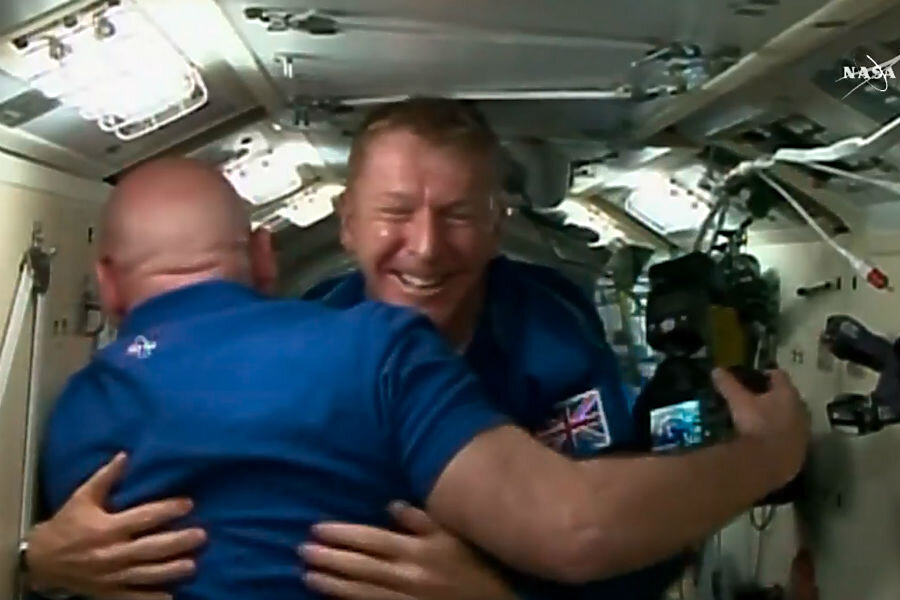Why an emergency spacewalk is needed on ISS
| Cape Canaveral, Fla.
Two Americans aboard the International Space Station are gearing up for a spacewalk early next week to free a stalled rail car.
Flight controllers in Houston were moving the rail car on the outside of the orbiting lab when it got stuck Wednesday. It stalled just 4 inches from its lock-down position.
NASA operations manager Kenny Todd said Friday the car needs to be securely attached to its guide rails before any dockings by visiting spacecraft. Russia plans to launch a supply ship Monday for a linkup Wednesday.
NASA's one-year spaceman Scott Kelly and the newly arrived Timothy Kopra could step outside as early as Monday. Managers will decide Sunday whether to proceed or wait until Tuesday.
Engineers believe a stuck brake handle is to blame. This mobile transport system is normally used to transport people and equipment, including the station's big robot arm.
Todd said it was fortunate the car ended up in the middle rather than on the end of the space station's long, trusslike framework. At least the center-of-gravity is good, and access should be easy for the spacewalkers, he said.
"We kind of got lucky. If we're going to have this kind of problem, we're ... right almost in the middle of the truss," Todd said in a NASA TV interview.
The spacewalk would last about three hours, and the astronauts might even be asked to take care of a few other tasks.
Kelly is three-quarters of the way into a one-year mission that's due to end in March. Kopra arrived Tuesday, launching from Kazakhstan with Russian and British colleagues.
NASA reported that a Russian resupply ship left the Space Station early Saturday after 166 days attached to the Pirs docking compartment. The trash-filled Progress 60 (60P) undocked from Pirs at 2:35 a.m. EST/7:35 a.m. UTC and re-entered Earth’s atmosphere a few hours later in a fiery destruction over the Pacific Ocean.
In other space news, SpaceX is aiming for a Sunday launch, its first since a summer accident grounded its Falcon line of rockets.
The company conducted a test-firing of its rocket at Cape Canaveral, Florida, on Friday. It took three days for SpaceX to complete the test. But in the end, chief executive Elon Musk said the engine firing appeared to go well and that, pending a review, a launch attempt would occur Sunday night.
SpaceX's rockets have been grounded since one failed during liftoff in June. The accident occurred on a space station supply run for NASA. The upcoming flight will involve a satellite delivery for OrbComm. If it goes well, flights for NASA could resume in February.
The company will attempt, again, to land the spent first-stage booster.






